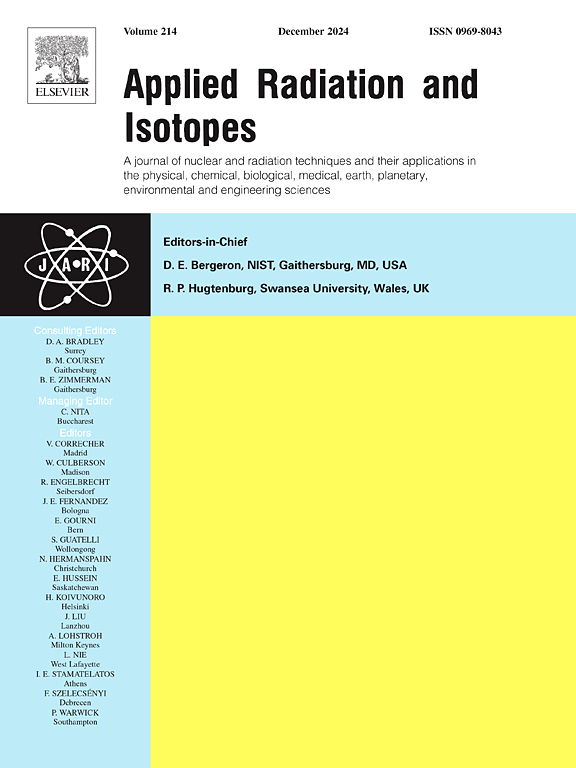Investigating the Li2O-Al2O3-B2O3 matrix: A promising approach for immobilizing radioactive waste
IF 1.6
3区 工程技术
Q3 CHEMISTRY, INORGANIC & NUCLEAR
引用次数: 0
Abstract
Dealing with radioactive waste, particularly from various industrial processes, poses significant challenges. This paper explores the use of lithium aluminate borate (Li-Al-B) glass matrix as an alternative method for immobilizing radioactive waste, focusing specifically on waste generated in tin smelting industries, known as tin slag. The study primarily concentrates on transforming tin slag, a byproduct abundant in Natural Occurring Radioactive Material (NORM), into a stable and safe form for disposal. The experimental procedures involve blending different compositions of tin slag and Li-Al-B glass, followed by melting them at 1000 °C for 1 h and then rapidly cooling to room temperature. The resulting glass waste identifies an optimal weight percentage of waste loading (typically ranging from 25% to 45%), to minimize volume while effectively immobilizing radioactive material. Notably, the glass waste exhibited an amorphous phase during the product consistency test (PCT) process, demonstrating the fundamental relationship between waste composition and immobilization efficiency. Energy dispersive X-ray spectroscopy (EDX) analysis confirmed a uniform distribution of major elements within the glass waste, underscoring its structural integrity. Furthermore, the dissolution rate of key elements in the glass waste is analyzed, revealing a robust resistance to leaching under varying pH conditions. The normalized mass loss of Boron (B), Lithium (Li), and Aluminum (Al) consistently remain below established glass limits (<2 gm-2), indicative of the glass's exceptional durability. In conclusion, these findings highlight the potential effectiveness of Li-Al-B glass as a versatile host material for immobilizing solid radioactive waste, extending beyond its initial application with tin slag. By highlighting the positive qualities of this matrix, the study emphasizes its potential flexibility in accommodating various types of solid waste matrices.
求助全文
约1分钟内获得全文
求助全文
来源期刊

Applied Radiation and Isotopes
工程技术-核科学技术
CiteScore
3.00
自引率
12.50%
发文量
406
审稿时长
13.5 months
期刊介绍:
Applied Radiation and Isotopes provides a high quality medium for the publication of substantial, original and scientific and technological papers on the development and peaceful application of nuclear, radiation and radionuclide techniques in chemistry, physics, biochemistry, biology, medicine, security, engineering and in the earth, planetary and environmental sciences, all including dosimetry. Nuclear techniques are defined in the broadest sense and both experimental and theoretical papers are welcome. They include the development and use of α- and β-particles, X-rays and γ-rays, neutrons and other nuclear particles and radiations from all sources, including radionuclides, synchrotron sources, cyclotrons and reactors and from the natural environment.
The journal aims to publish papers with significance to an international audience, containing substantial novelty and scientific impact. The Editors reserve the rights to reject, with or without external review, papers that do not meet these criteria.
Papers dealing with radiation processing, i.e., where radiation is used to bring about a biological, chemical or physical change in a material, should be directed to our sister journal Radiation Physics and Chemistry.
 求助内容:
求助内容: 应助结果提醒方式:
应助结果提醒方式:


